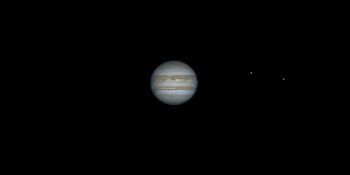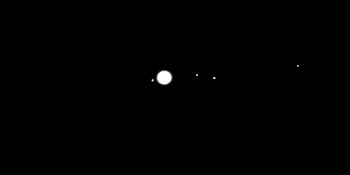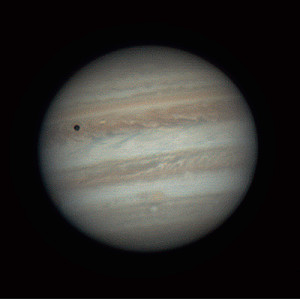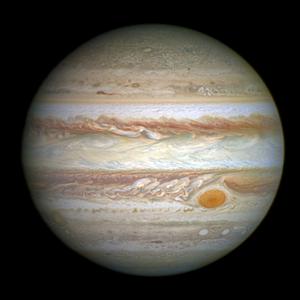Glossary term: 外行星
Description: 在太阳系中,外行星包括木星、土星、天王星和海王星。它们的轨道都在小行星带之外,并且所有这些行星都是所谓的巨行星,它们的大气层非常厚,主要由氢气构成。这使得它们在物理上与内行星截然不同,内行星都是相对较小的岩质天体,大气层相对稀薄。
对于太阳以外的恒星,其周围的行星并不一定分为具有类似特征的内行星群和外行星群--我们知道有许多恒星的近轨道上至少有一颗气态巨行星,即 "热木星"。
Related Terms:
See this term in other languages
Term and definition status: The original definition of this term in English have been approved by a research astronomer and a teacher The translation of this term and its definition is still awaiting approval
The OAE Multilingual Glossary is a project of the IAU Office of Astronomy for Education (OAE) in collaboration with the IAU Office of Astronomy Outreach (OAO). The terms and definitions were chosen, written and reviewed by a collective effort from the OAE, the OAE Centers and Nodes, the OAE National Astronomy Education Coordinators (NAECs) and other volunteers. You can find a full list of credits here. All glossary terms and their definitions are released under a Creative Commons CC BY-4.0 license and should be credited to "IAU OAE".
If you notice a factual or translation error in this glossary term or definition then please get in touch.
Related Media
木星的自转,作者 Vishal Sharma,印度
Credit: Vishal Sharma/IAU OAE
License: CC-BY-4.0 Creative Commons 署名 4.0 国际 (CC BY 4.0) icons
木卫影片2,Nicolas Hurez,Paul-Antoine Matrangolo,和Carl Pennypacker,美国
Credit: Nicolas Hurez,Paul-Antoine Matrangolo 和 Carl Pennypacker/IAU OAE
License: CC-BY-4.0 Creative Commons 署名 4.0 国际 (CC BY 4.0) icons
木星、木卫一及其阴影,作者:Ralf Burkart,德国
Credit: Ralf Burkart/IAU OAE
License: CC-BY-4.0 Creative Commons 署名 4.0 国际 (CC BY 4.0) icons
木星
Credit: 美国国家航空航天局、欧空局和 A. Simon(戈达德太空飞行中心) credit link
License: CC-BY-4.0 Creative Commons 署名 4.0 国际 (CC BY 4.0) icons
土星
Credit: 美国国家航空航天局、欧空局、A. Simon(戈达德太空飞行中心)和 M.H. Wong(加州大学伯克利分校) credit link
License: CC-BY-4.0 Creative Commons 署名 4.0 国际 (CC BY 4.0) icons













